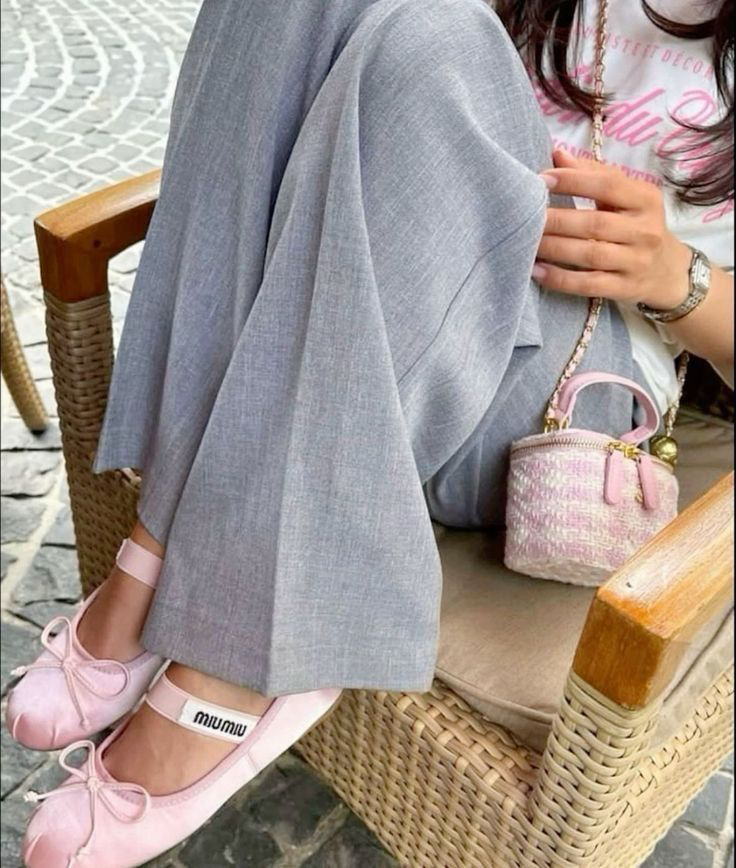The Girlhood Renaissance
Image Courtesy: https://pin.it/6JQxhyRpc
If you’ve scrolled through TikTok or Instagram lately, you’ve probably noticed it—ballet flats, oversized bows, frilly socks and dresses that look straight out of a childhood daydream. From Miu Miu’s balletcore revival to Sandy Liang’s girlish designs, fashion is fully embracing a return to softness, whimsy and nostalgia. But is this just another trend, or is there something deeper behind the obsession with dressing like our younger selves?
Some see it as rebellion—a rejection of the hyper-adult, "girlboss" aesthetic that dominated the 2010s. Others view it as pure fun, an escape into fantasy in an overwhelming world. Either way, the Girlhood Renaissance is here, redefining what it means to grow up in style. This movement goes beyond aesthetics, offering a reclaiming of femininity in a society that has long told women that softness and power cannot coexist.
Image Courtesy: https://pin.it/60TQ2FZnp
Influencers like Layla Blue and Brookie Yancey have been at the forefront of the new wave of shabby chic, an aesthetic defined by its effortlessly feminine, nostalgic appeal and embrace of imperfections. However, this romanticized take on softness and vintage charm is far from new. Throughout history, femininity in fashion has been reclaimed and reinterpreted time and again. The Victorian era embraced delicate lace, florals and ruffles as symbols of refinement, while the 2000s saw the rise of boho-chic and vintage-inspired dressing championed by figures like Sienna Miller. Today, creators like Layla and Brookie are breathing new life into the aesthetic, merging past influences with a contemporary, internet-driven femininity that feels both nostalgic and fresh.
At the core of the Girlhood Renaissance lies a powerful feminist act: the rejection of the patriarchal belief that women must choose between being delicate or powerful. For too long, society has framed femininity as weak or frivolous, often suggesting that to be strong, a woman must adopt a more masculine or hardened persona. This movement challenges that notion, showing that softness can be a source of strength. In embracing childlike fashion, women are asserting that femininity isn’t a limitation—it’s an expression of individuality, agency and resilience. It’s about owning one's identity, free from the constraints of outdated gender norms.
Image Courtesy: https://pin.it/6lASsWdAW
The rise of childlike fashion isn’t just about aesthetics—it’s rooted in psychology. Nostalgic dressing provides a sense of comfort and emotional connection, a longing for simpler times. The COVID-19 pandemic played a major role in accelerating this desire, as many found solace in familiar, whimsical styles reminiscent of childhood. In contrast to the recent office siren trend, which embraced a structured, masculine-inspired look, the Girlhood Renaissance signals a rejection of the male gaze, celebrating softness and individuality instead.
Image Courtesy: https://pin.it/1eVM99Ona
As the Girlhood Renaissance gains momentum, brands have been quick to capitalize on its dreamy aesthetic. Designers like Miu Miu and Sandy Liang have embraced the look with ballet flats, oversized bows and ruffled dresses, while fast fashion brands churn out affordable versions just as quickly. But as with any trend, there’s a fine line between genuine self-expression and mass-market commercialization. When something so deeply personal becomes mainstream, does it lose its meaning, or does it simply evolve?
Beyond the trend cycle, this girly revolution represents more than just fashion—it’s a cultural shift toward reclaiming joy, agency and softness in a world that often prioritizes toughness. Dressing in bows, lace or baby tees isn’t just about aesthetics; it’s about embracing femininity on one’s own terms, free from past associations of weakness or frivolity. In a fast-paced, often overwhelming world, this movement is a reminder that fashion can be playful, comforting, and, most importantly, a reflection of personal identity.
Strike out,
Lovely Grace Pilibino
Editor: Maddie Launer
Athens




